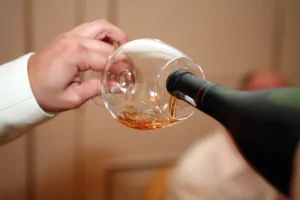
Among all alcoholic subtypes, the Chronic Severe alcoholic is the most likely to seek treatment – two-thirds will go to alcohol rehab. The different types of alcoholics are not meant as a diagnostic tool to figure out if someone is suffering from an alcohol use disorder. Rather, by knowing which alcoholic personality type you or a loved are acts as a guide to finding the best treatment and prevention methods.

Alcohol Treatment with Dr. Wandler

Drinking may then be used as a method of self-medicating the personality disorder symptoms. This subtype of alcoholics is generally in their mid-20s and started drinking young. Early episodes of binge and heavy drinking (binge drinking on five or more days in the same month) can elevate the risk for struggling with alcohol-related issues later in life. These individuals are also more at risk of major depression and bipolar disorder, adding to the time spent in rehabilitation and treating these co-occurring mental health issues. Individuals who classify as functional alcoholics often struggle with mental health, and many individuals in this category commonly report depression and other mood disorders as a result of their behaviour. Generally, this group tends to view drinking heavily as a normal behavior.
Short- & Long-Term Effects of Alcohol Addiction

When someone struggles with an alcohol use disorder, they feel an overwhelming compulsion to drink alcohol. Over 15 million Americans struggle with this disease, and that’s only those over the age of 18. While two-thirds have sought alcohol rehab for their addiction, it’s important that any treatment program address their co-occurring disorders and include therapies focused on preventing alcohol relapse. When heavy or binge drinking is the norm in a family, people tend to fall into drinking as normal behavior. Alcohol withdrawal can begin within hours of ending a drinking session. Only 8.7% of young adult alcohol dependents have ever sought treatment for their drinking problem.
Alcohol Abuse
The provider will also help them set goals for reducing alcohol consumption by explaining the difference between moderate and binge or heavy drinking. About half of functional alcoholics are married, 62 percent work full-time, and 26 percent have a college degree. On average, they drink alcohol every other day, and they consume five or more drinks on an average of 98 of those drinking days. About 31 percent of functional alcoholics have a family member with alcohol use disorder. Although they have low rates of anxiety disorders, they have about a 24 percent probability of having major depression. Most people of this subtype are employed, although their income level is likely to be lower than the functional subtype.
Paying for Treatment

These medications can help reduce cravings, block the effects of alcohol, and treat withdrawal symptoms like anxiety and insomnia. This type of treatment allows you to receive help in an outpatient setting while still attending to your everyday responsibilities. This is a great option for people with mild to moderate addiction and those who have already gone through inpatient treatment.
Assessing Liver Health
When seeking treatment, they tend to turn to social workers, psychologists, psychiatrists and private physicians. They are also young (average age 26 years) and have the earliest age of onset of drinking (average is under 16 years old) and the earliest age of alcohol dependence (average of 18 years). Young antisocial alcoholics drank an average 5 types of alcoholics of 201 days in the last year, binge drinking (consuming five or more drinks) on an average of 80% of their drinking days. When they drink, their maximum number of drinks is 17, the highest of any subtype of alcoholic. One such issue is that of a perceived need for professional help and recognition that a problem with alcohol exists.
- Professional counselors use behavioral treatments to help alcoholics develop new habits.
- Most functional alcoholics are middle-aged (around 41) who started drinking around age 18.
- Out of all the other subtypes, this one rates the highest for abuse of other substances and other psychiatric disorders.
- Although the average age of this group is 24, most have spent at least the last four years as an alcoholic.
- This is often the most challenging type of alcohol use disorder to notice because people with functional AUD tend to hold down successful jobs and relationships.
- This type of alcoholic can balance their personal and professional responsibilities while living with addiction.
- You’ll also know why it requires special treatment for successful recovery.
- Our writers and reviewers are experienced professionals in medicine, addiction treatment, and healthcare.
And when a person fully understands that their drinking problem is an illness – and not a moral weakness – classification shows them that their disease did not come out of nowhere. Genetics, environment, personal habits, and mental health history all contributed to their choice the fact that they have continued to drink despite negative consequences. As a group, they have a relatively low rate of dual diagnoses, fewer instances of familial alcoholism, and only rarely seek specialized treatment for their illness. Only about a fourth of those in this subtype have sought treatment, usually from specialty treatment programs, detoxification clinics or self-help groups. Alcoholic characteristics of those in this category include struggles with other addictions, such as those to cigarettes, marijuana or even cocaine. Many have a higher level of education, but not as high as those in the functional subtype.
- They start drinking at an even younger age than the young adult type, usually around 15.
- Most of these individuals will have a family history of AUD, meaning that they were more likely to be exposed to this behaviour as a young child or adolescent.
- The NIAAA researchers found that there were five distinct patterns of alcohol dependence.
- In most cases, chronic severe subtype is the most damaging subtype compared to the different types of alcoholics.
- Alcohol use disorder looks different for each person, so your treatment should look different too.


Comment closed!